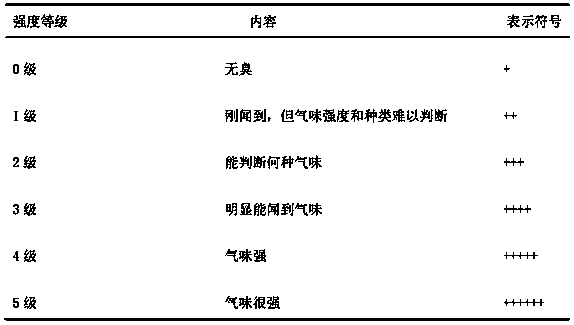Bacillus subtilis X3 and application thereof for reducing generation of hydrogen sulfide in buffalo dung
A Bacillus subtilis, hydrogen sulfide technology, applied in the direction of microorganism-based methods, bacteria, microorganisms, etc., to achieve the effect of reducing hydrogen sulfide gas generation, high-efficiency hydrogen sulfide gas generation, and broad application prospects
- Summary
- Abstract
- Description
- Claims
- Application Information
AI Technical Summary
Problems solved by technology
Method used
Image
Examples
Embodiment 1
[0045] Isolation of Bacillus subtilis X3 (Bacillus subtilis X3, No. CCTCC NO: M2013261).
[0046] The isolation of Bacillus subtilis X3 (Bacillus subtilis X3 number is CCTCC NO: M2013261) includes two parts: sample screening and strain isolation:
[0047] 1. Preliminary screening of sample sources containing highly efficient deodorizing microorganisms:
[0048] (1) Weigh 10g of the sewer sludge outside the cattle farm, fish pond water, sewer sludge inside the cattle farm, mud beside the fish pond, and dried cow manure on the grassland, and put them into the centrifuge tube (note: a small space should be left to not fill it up) , to avoid volume increase and expansion after freezing), store at -20°C, and store 3 tubes for each sample.
[0049] (2) Weigh 20g of fresh cow dung and add it to the petri dish.
[0050] (3) Weigh the sewer sludge outside the cattle farm, fish pond water, sewer sludge inside the cattle farm, mud beside the fish pond, dry cow dung on the grassland, an...
Embodiment 2
[0074] Deodorizing microorganism Bacillus subtilis X3 (Bacillus subtilis X3) to reduce hydrogen sulfide gas production in buffalo manure:
[0075] (1) Add 50g of cow dung into a 1000ml large plastic beaker, inoculate the microbial culture solution with deodorizing effect in the preliminary screening test according to 20% inoculation amount, and use the same amount of sterile water as a control;
[0076] (2) Put a small beaker containing 20ml zinc ammonium complex salt solution in a large beaker to absorb hydrogen sulfide (see Appendix 1 for the determination method). The large beaker was sealed with two layers of plastic film and one layer of plastic wrap, and two replicates were done, and incubated at room temperature.
[0077] (3) Take a small beaker to detect the release of ammonia and hydrogen sulfide every 2 days for 8 consecutive days.
[0078] The result is as follows:
[0079] The results in Table 4 show that the strain Bacillus subtilis X3 (Bacillus subtilis X3) can...
Embodiment 3
[0083] Identification of deodorizing microorganism Bacillus subtilis X3:
[0084] Inoculate the microorganism Bacillus subtilis X3 (Bacillus subtilis X3) with greatly reduced hydrogen sulfide release in the liquid medium, cultivate it in the incubator for 16 hours, and then take samples for observation under the microscope; in addition, take 2ml samples and add 2ml cryopreservation tube, stored at -80°C, used for DNA extraction, and then used primer 8f(5'-CACGGATCCAGAGTTTGAT(C / T)(A / C)TGGCTCAG-3') / 1510r(5'-GTGAAGCTTACGG(C / T ) TACCTTGTTACGACTT-3') amplifies the bacterial 16S rRNA sequence and sends it for detection.
[0085] Microscopic identification and sequencing results are as follows:
[0086] The morphology of the isolated and cultured microbial colonies was observed under a microscope. Colony morphology: milky white, round, with smooth edges, moist, thicker in the middle of the colony, and gradually thinner towards the surroundings. The bacterial DNA was extracted and ...
PUM
 Login to View More
Login to View More Abstract
Description
Claims
Application Information
 Login to View More
Login to View More - R&D
- Intellectual Property
- Life Sciences
- Materials
- Tech Scout
- Unparalleled Data Quality
- Higher Quality Content
- 60% Fewer Hallucinations
Browse by: Latest US Patents, China's latest patents, Technical Efficacy Thesaurus, Application Domain, Technology Topic, Popular Technical Reports.
© 2025 PatSnap. All rights reserved.Legal|Privacy policy|Modern Slavery Act Transparency Statement|Sitemap|About US| Contact US: help@patsnap.com



